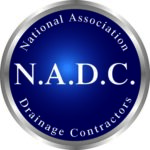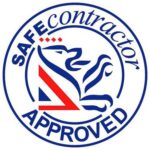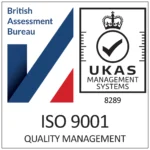We’re proud to serve customers throughout Cumbria and beyond, including:
Surface Water Drainage
we provide comprehensive flood defence and surface water drainage solutions — from initial site strategy and SuDS design through to fully engineered systems for construction and long-term management.
Flood Defence & Surface Water Drainage Services
Our drainage specialists have decades of experience working across the UK — including in areas where Schedule 3 of the Flood and Water Management Act has been implemented — ensuring every design meets both local planning policy and Environment Agency regulations.
Whether you’re developing new housing, expanding commercial premises, or improving existing infrastructure, we create tailored systems that safely and sustainably manage rainfall runoff, reduce flood risk, and protect the environment.
What Are SuDS?
In natural environments, rainfall soaks gradually into permeable surfaces like grass and soil. In built-up areas, hard surfaces such as roads and roofs prevent this process, causing excess runoff, localised flooding, and pollution.
Sustainable Drainage Systems (SuDS) mimic natural processes — capturing and slowing water near where it falls, filtering it naturally, and releasing it safely into the environment.
Key benefits include:
-
Reduced flood risk — Slows runoff and prevents system overloads.
-
Improved water quality — Natural filtration removes sediment and pollutants.
-
Enhanced biodiversity — Ponds, swales, and wetlands support local ecosystems.
-
Better amenity value — Creates greener, more sustainable places to live and work.
SuDS also offer broader environmental benefits — enhancing biodiversity, supporting greener spaces, and contributing to sustainable place-making.
When to Consider One
You may need a flood defence or surface water drainage strategy if:
-
Your site experiences standing water or frequent surface flooding
-
You are submitting a planning application for new development
-
Local authority requests a SuDS or flood risk assessment
-
Your property lies within a flood risk or low infiltration zone
-
You require long-term resilience and compliance with EA or LLFA standards
Why Choose Us?
-
Over 30 years’ experience in drainage design and flood prevention
-
Fully accredited (NADC, SafeContractor, CHAS, ISO 9001)
-
In-depth knowledge of national and local SuDS regulations
-
Complete design-to-installation service
-
Environmentally responsible and cost-effective solutions
Areas We Cover
- Whitehaven
- Workington
- Carlisle
- Keswick
- Wigton
- Kendal
- Windermere
- Penrith
- Barrow-in-Furness
- and surrounding areas across the Scottish Borders.
If you’re unsure whether we cover your location, just give us a call — our friendly team will be happy to help.
SuDS Planning Process
Pre-Application & Outline Planning Drainage Strategy
Unblock Cumbria can prepare a policy-compliant outline drainage strategy to support your planning application.
We assess your site’s conditions, propose sustainable drainage solutions (SuDS), and ensure early compliance with planning policy and environmental standards, helping you secure approval at the first stage of your project.
Full Planning
If your development proposal involves constructing a new building or significant site alteration, Unblock Cumbria provides a comprehensive drainage strategy to accompany your full planning application.
Our team designs efficient, sustainable systems that manage surface water effectively while meeting all statutory and planning authority requirements.
Discharge of Conditions
We offer expert support with the discharge of drainage-related planning conditions, ensuring all necessary documentation, calculations, and evidence are prepared and submitted correctly.
Our team will guide you through the process, helping you satisfy local authority requirements swiftly and efficiently.
Detailed Design
Following condition discharge, Unblock Cumbria can progress your project through detailed drainage design, reserved matters, and construction stages.
We provide fully engineered designs, drawings, and calculations ready for contractor use, ensuring your drainage system is robust, compliant, and built to last.
Frequently asked questions
What is the difference between SuDS and traditional drainage?
Traditional systems move water quickly into sewers, often overloading them during heavy rainfall. SuDS replicate natural drainage, storing and filtering water on-site to prevent flooding and improve water quality.
Do I need SuDS for my planning application?
If you’re developing a site larger than a single dwelling or altering significant impermeable areas, SuDS are likely a mandatory requirement under local planning policy. Our engineers can prepare the full strategy for you.
Can SuDS work on clay soil?
Yes — even on low-permeability ground, we design hybrid systems that combine attenuation and controlled discharge to maintain performance and compliance.
Are SuDS expensive to maintain?
Maintenance costs are typically low. Features such as swales or retention ponds only require periodic clearance and inspection. We also offer ongoing maintenance plans for larger developments.
Can you retrofit SuDS to existing properties?
Absolutely. We frequently integrate SuDS into established sites to reduce runoff and improve sustainability, especially where older systems are prone to flooding.





